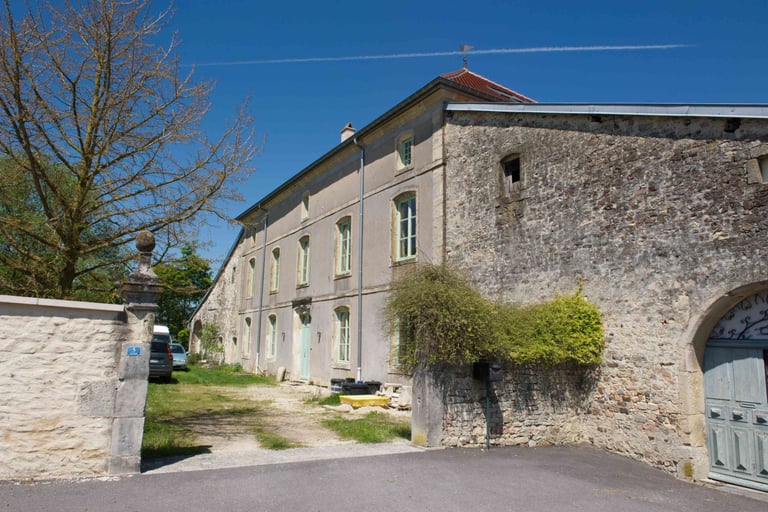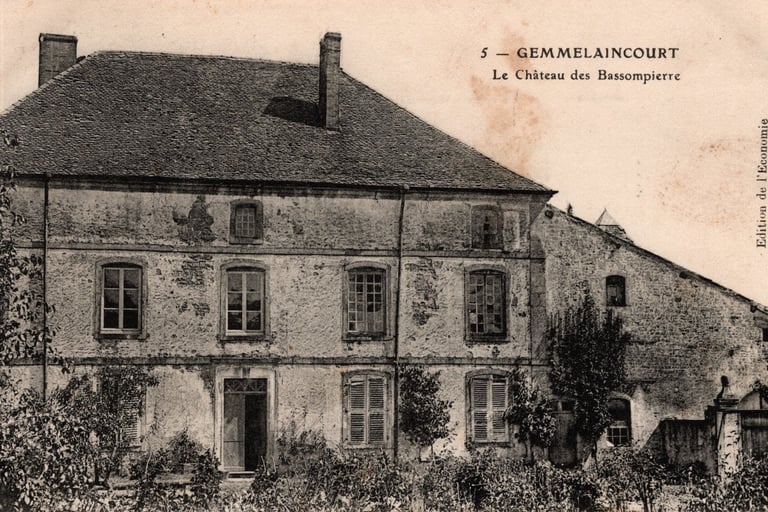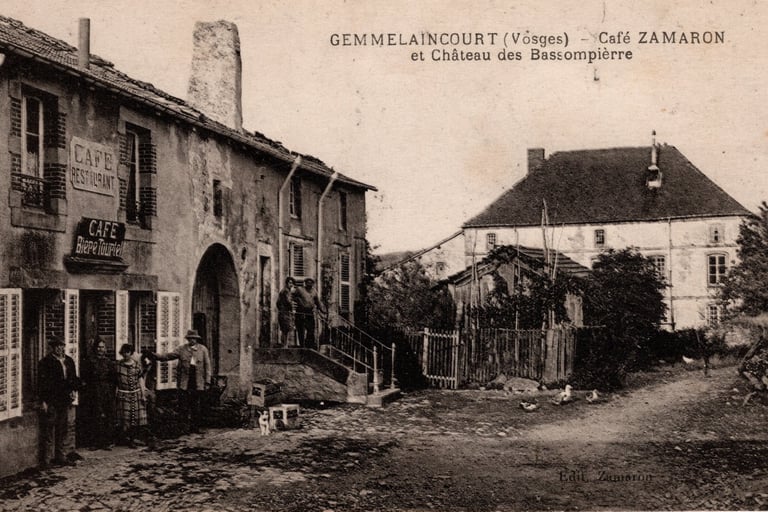
The castle of Bassompierre
and Léopold d'Hennezel, Lord of Gemmelaincourt
The castle
Bassompierre Castle was built on the remains of an old hunting lodge. The base plate bears the date 1778. During the French Revolution, the castle was owned by Léopold d'Hennezel de Francogney. In the 19th and 20th centuries, it served the parish as a vicarage. In the mid-1980s, when the village's last priest retired, the parish took over the building, but sold it soon afterwards. The then owner's idea of turning it into a restaurant failed and the building passed into the ownership of an artist from Nancy, who began renovating the building. On the night of January 25-26, 2015, the castle was badly damaged by fire, but was rebuilt in the years that followed. It is still privately owned today.


When the law "Levée en masse" (literally "conscription of the masses") was passed in 1793, Léopold d'Hennezel was approaching fifty. The law obliged all French men between the ages of 18 and 25 to serve in the army. 1793 was also the calamitous year in which d'Hennezel was accused of obstructing the recruitment of conscripts. In his defense, d'Hennezel claimed that the rumor of his counter-revolutionary behavior was spread by the former mayor of Gemmelaincourt, Monsieur Grandmessin, in revenge for having forbidden him to hunt and fish. The court did not believe him. Not least because d'Hennezel had traveled to Thionville in March 1792, where he was apprehended at customs with six louis d'or. D'Hennezel was sentenced to death by the criminal court of the Vosges either for attempting to obstruct the recruitment measures or for attempting to flee abroad, or for both.
The execution of d'Hennezel was to take place in Mirecourt on July 30, 1793. It was the gardener Joseph Bourbon and his nephew Claude Maniguet who discovered the hole in the wall on the second floor of the prison and the bed sheets hanging out of it that morning. Léopold d'Hennezel had escaped with fellow prisoner Antoine-François Colling. It is said that as the two condemned men were fleeing across the fields of Mirecourt, they came across a group of peasants who, without knowing them, inquired about the time at which the head of the former Lord of Gemmelaincourt was to be cut off. Without worrying, the latter replied: "Hurry up, because you might be late".
Léopold d'Hennezel fled to Switzerland and then joined Condé's army. He returned to France in 1800. He died on April 19, 1835 in Gemmelaincourt at the age of 89.
Léopold d'Hennezel




SOURCES
Albert Troux, "La Révolution en Lorraine", Nancy 1931
gallica.bnf.fr / Bibliothèque nationale de France
hennezel.net
CONTACT
Le Jadin des Lys
8 rue de la Fontaine
88170 Gemmelaincourt
info@gemmelaincourt.com
Legal Notice & Privacy Policy
